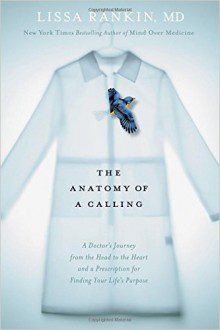By Lissa Rankin
Guest writer for Wake Up World
Let’s say conflict arises when you’re with someone. It could be anyone — a friend, your spouse, your child, your boss, a stranger in line at the grocery store, your employee. Something happens, and you are triggered. The story of what triggers you doesn’t matter so much. Someone cut you off in traffic. Your boyfriend is flirting with another woman. Your mother criticized you… again. Your boss demeaned you… again. You child just overstepped the boundary you set… again. Or it could be more serious. Your husband cheated. Your daughter stole from you. Your boss made a pass at you. Your best friend just slept with your girlfriend. Your business partner embezzled from you.
Regardless of the story, what’s important to begin this process is the awareness that you are triggered, so you can initiate the following practice instead of reacting unconsciously at the moment of the trigger.
[pro_ad_display_adzone id=”110028″]
Nobody has ever triggered me more than my gay best friend Dennis, who psychics and shamans tell me is my “twin flame.” Dennis and I adore each other, but the nature of our relationship is that we tend to inadvertently stick needles into each other’s core wounds. This is both healing and painful. These triggered moments create opportunities for us to heal, rather than avoid, our core wounds. But oh man—sometimes I have to wonder whether Dennis and I are what Jeff Brown would call “woundmates.”
Regardless of whether Dennis and I are twin flames or woundmates, the most notable way this relationship has blessed me is to teach me how to engage in conscious conflict through a process that continues to be a practice for me. Although this is a very personal process, I discussed how I navigate this process with Dennis; he made his own suggestions (included here), and we thought I’d share our process publicly, in case this process serves you too.
1. TRIGGER. Be aware that you are triggered.
Learn to recognize when you’re triggered. What happens in your body? Does your pulse race and start pounding your heartbeat in your ears? Does your solar plexus contract? Does your mind blow a fuse or start racing from story to story? Does your heart close? Do you feel frightened or tend to lash out or get judgmental? Don’t make your trigger wrong or beat yourself up. Just silently and gently label it “Trigger,” then move to the next step.
2. PAUSE & SURRENDER. Use your trigger as a cue to pause, get silent, and surrender the trigger to the Divine.
With experience, you will learn to find the silent pause without leaving the presence of the other person, but when you first start practicing this, or if the trigger is very magnified, you may need to excuse yourself from the other person’s presence, so you don’t lose your cool. Go to the restroom so you can be alone if you are in a social setting or at work. If you can, step outside and find a quiet spot in nature. Especially if you are aware that the person who triggered you has an abandonment trigger, tell him or her when you will return. (“I’m going to the bathroom. I’ll be back in 15 minutes.”) If the trigger is extreme, you might need to take a day or a week or even a month or more. Take a guess at how much time you’ll need and inform the other person, letting them know, “I’ll check back with you tomorrow and let you know whether I’m ready to talk.” Otherwise, you may inflame the situation by aggravating the trigger of the person who just triggered you.
If you are with someone intimate who has agreed to use this practice with you, simply announce, “I’m triggered. I need a minute.” Keep in mind that this is your inner work. You’re not saying you feel triggered to blame someone. You’re just acknowledging that you need some space to do your inner work. Then close your eyes, and go into silence. From that silent place, tune into your heart and make an offering of the whole situation to the Divine, surrendering any grasping or resistance and asking humbly for Divine help.
3. FEEL & INQUIRE. Allow emotion to arise. Get curious.
When the mind quiets, the feeling is likely to arise spontaneously, but if it doesn’t, put your hand on your heart and ask your heart, “What emotion am I feeling right now?” Let yourself be truly naked and vulnerable. Release all judgment. Do you feel angry? Sad? Hurt? Disappointed? Disrespected? Helpless? Frightened? Frustrated? Criticized? Unloved? Welcome and feel deeply whatever feeling arises. Don’t resist it. Don’t suppress it. Allow it to take you over. Let tears flow if they want to. Let anger bubble up if it wants to rage through you. Let anxiety or hysteria or full on panic arise if it must. Feel it. Obviously, don’t hit anyone. Don’t even speak to anyone during the feeling phase if you can avoid it. Just feel what you feel unhindered. Pay attention to the familiarity of the feeling. Can you pinpoint when you first felt like this? When have you felt this way before? How old do you feel when you feel this way?
Very often, when the trigger is out of proportion to what happens, a childhood wound is being needled. Ask yourself, “When is the first time I felt the way I feel right now?” See if you can recall an experience from childhood that made you feel similar to how you’re feeling in the triggered moment. When was the first time you felt this angry/sad/betrayed/helpless/ignored, etc.? If a memory arises, feel the emotion of the original trigger. Let yourself express that emotion and be comforted once more. Often, this trigger brings up a mommy issue or a daddy issue. Be very tender with yourself if any old memories arise. If you notice any old memories that might be inflaming your emotional response to whatever just happened in present time, be aware that you may be projecting some of your childhood wounds onto your spouse, child, colleague, or friend. This doesn’t diminish what happened in present time, but perhaps it can give you some insight into why this circumstance elicited such a strong trigger.
At this crucial point, you have the opportunity to unhook the trigger from the person who triggered you. Perhaps something arose that triggered old memories and old patterns that are now playing out again. This doesn’t mean you don’t have a genuine beef with the person who triggered you, but very often, you can see that your emotions have escalated because you’re hooked into old feelings and patterns that may or may not have anything to do with the person who triggered them.
4. BREATHE & GET INTO THE LOVING, OPEN, AND VULNERABLE HEART. Take a few deep breaths, visualizing the breath coming in and out through your heart.
[pro_ad_display_adzone id=”110030″]
Once you’ve let yourself feel the emotion, see if you can turn down the volume on whatever story your mind is playing. One way of turning down the volume is by focusing on your breath and your heart, so you stay in your body. Using a Heartmath technique, try visualizing your breath coming in and out through your heart. If it feels resonant, find a mantra that can quiet your mind, like “Om” or “Peace” or “Heart.” While your mind might still be playing its story, actively remind your heart that you actually care for and love the person who is triggering you. Remember that we’re all connected on some cosmic level. It often feels like a release in the heart region. You’ll feel the heart dropping into a lower part of the body as you enter a more peaceful state, with the active mind fading more into the background. This allows you to unhook from your mind’s story and notice the separation your mind is creating. While feeling love, you can now notice any tendency you have to blame, judge, or criticize. Notice any righteousness that casts you as “right” and the other as “wrong.” See if you can sense into how the other is feeling. Listen to the person who triggered you from this honest, open-hearted, vulnerable space. This often allows a deeper silence to emerge beyond the words, allowing you to see with love instead of anger. This is most natural form of empathy. Return to love if you can.
5. COMFORT. Let yourself be loved up by whatever Benevolent Presence comforts you.
When you’re feeling, expressing, and clearing the raw emotion of the trigger, a vacuum is created within that draws in pure unconditional love and acceptance. Allow this vacuum to be filled by whatever force of love resonates with you—the Divine Mother, God, Goddess, an angel, an animal, your highest self, Jesus, Buddha, a redwood tree. See this loving presence with arms of love wrapping you in a bubble of bursting love, the way a mother would hold a scared, hurting child. Let this pure love fill your heart and wash you with radiance.
Some of us rarely feel this kind of pure love and it can overwhelm you or bring up feelings of unworthiness. Practice bench-pressing your receiving muscles as this love pours into you. Keep breathing through any resistance that might arise in the face of this sheer, unbridled love.
6. DEEPEN. Go deeper into your inquiry about what happened.
Try asking yourself a few questions.
- What’s true and not true about my story?
- When did I first feel the way I’m feeling now? Can I recall a time in my childhood when I felt this way? Might this situation be needling a core wound and causing me to escalate my trigger out of proportion to the actual event?
- Am I willing to put myself in the other person’s shoes and imagine that he or she may have a different story looping through his or her mind right now?
- Am I willing to get out of my self-focused perspective and open myself to the experience of the other individual?
- Can I stop judging and blaming the other and start owning my part in the conflict?
- Can I own my part without skipping my feelings or “spiritual bypassing?”
- Am I ready to wake up to my projections about the other person? How might it be possible that I am the very thing I am judging the other for?
7. COMPASSION. Find compassion for yourself and the other.
If any epiphanies arise, be sure to avoid letting your epiphany trigger shame. Shame is pure poison and is ineffective as a motivator of change. Instead, be very gentle with yourself and the other. Remind yourself, “Everybody is doing the best they can.” Allow yourself to be with any emotions that arise within you, but always come back to compassion. See if you can also find compassion for the other, even if you were really hurt by someone’s behavior. Go even further and see if you can find it in your heart to be grateful to the other for teaching you a soul lesson, even if it was a painful one.
8. INSPIRED ACTION. From a calm place in your heart, ask yourself whether you need to take any inspired actions based on what happened.
Doing the inner work around conflict is not meant to condone someone else’s disrespectful, violent, or unkind behavior. This is not meant to be used as some spiritual bypassing technique. In Robert Masters book Spiritual Bypassing, he talks about how one form of spiritual bypassing is using “blind compassion” or “neurotic tolerance” to avoid conflict, skip past unpleasant feelings, like anger, and avoid setting healthy boundaries. This practice is also not meant to force premature forgiveness or ignore the truth that consequences follow certain behaviors. The difference is that when you engage this process before becoming reactive, inspired action arises not from a judging, blaming perspective, but from the wisdom and discernment of the open heart. After doing the inner work, you may feel guided to make a request from the other individual. Or a boundary may need to be placed and enforced. It’s okay to even say, “This behavior is unacceptable to me. I need to end this relationship.” But now you will do so from a clean, examined state of inner calm. And most of the time, you’ll discover that what you feel most for the person who triggered you… is love.
Relationships as a Fast Track to Spiritual Growth
If you make this process a practice, you may find that your relationships put you on the fast track to personal and spiritual growth. Open yourself to joyful, easeful relationships, but if conflict arises (as it inevitably will), be willing to milk conflict for all it’s worth.
Love,

Recommended reading from Lissa Rankin:
- Relationships on the Spiritual Path
- The “Space Between Stories”
- How to Make Your Body Ripe for Miracles
- Are You “Spiritual But Not Religious?”
- A Lesson In Empathy
- 9 Practical Tips to Help You Find Your Calling
- 10 Fun Ways to Reduce Your Cortisol Levels
- 6 Stories To Make You Believe In The Power Of The Mind To Heal You
- A Radical Way To Grow Spiritually In A Relationship
- 7 Tips For Finding Your Tribe
- 10 Surprising Things That Trigger “Fight-Or-Flight”
About the author:
 Lissa Rankin, MD is a mind-body medicine physician on a grass roots mission to heal healthcare, while empowering you to heal yourself. She is the founder of the Whole Health Medicine Institute training program for physicians and healthcare providers, and the New York Times bestselling author of the books Mind Over Medicine: Scientific Proof That You Can Heal Yourself (2013), The Fear Cure (2014), and The Anatomy of a Calling (2015).
Lissa Rankin, MD is a mind-body medicine physician on a grass roots mission to heal healthcare, while empowering you to heal yourself. She is the founder of the Whole Health Medicine Institute training program for physicians and healthcare providers, and the New York Times bestselling author of the books Mind Over Medicine: Scientific Proof That You Can Heal Yourself (2013), The Fear Cure (2014), and The Anatomy of a Calling (2015).
Lissa blogs at LissaRankin.com and created the online community HealHealthCareNow.com. She is also the author of several other books, a speaker, a professional artist, an amateur ski bum, and an avid hiker. She lives in the San Francisco Bay area.
Connect with Lissa on Facebook and Twitter, or visit LissaRankin.com.
The Anatomy of a Calling: A Doctor’s Journey from the Head to the Heart and a Prescription for Finding Your Life’s Purpose
The new book by Lissa Rankin, MD.
We are all on a mission to step into our true nature and fulfill the assignment our souls were sent to Earth to fulfill.
In The Anatomy of a Calling, Lissa describes her entire spiritual journey for the first time — beginning with what she calls her “perfect storm” of events — and recounts the many transformative experiences that led to a profound awakening of her soul. Through her father’s death, her daughter’s birth, career victories and failures, and an ongoing struggle to identify as both a doctor and a healer, Lissa discovers a powerful self-awareness.
As she shares her story, she encourages you to find out where you are on your own journey, offering inspiring guideposts and practices along the way. With compelling lessons on trusting intuition, surrendering to love, and learning to see adversity as an opportunity for soul growth, The Anatomy of a Calling invites you to make a powerful shift in consciousness and reach your highest destiny.
Lissa Rankin’s book “The Anatomy of a Calling” is available here on Amazon.
[pro_ad_display_adzone id=”110027″]








